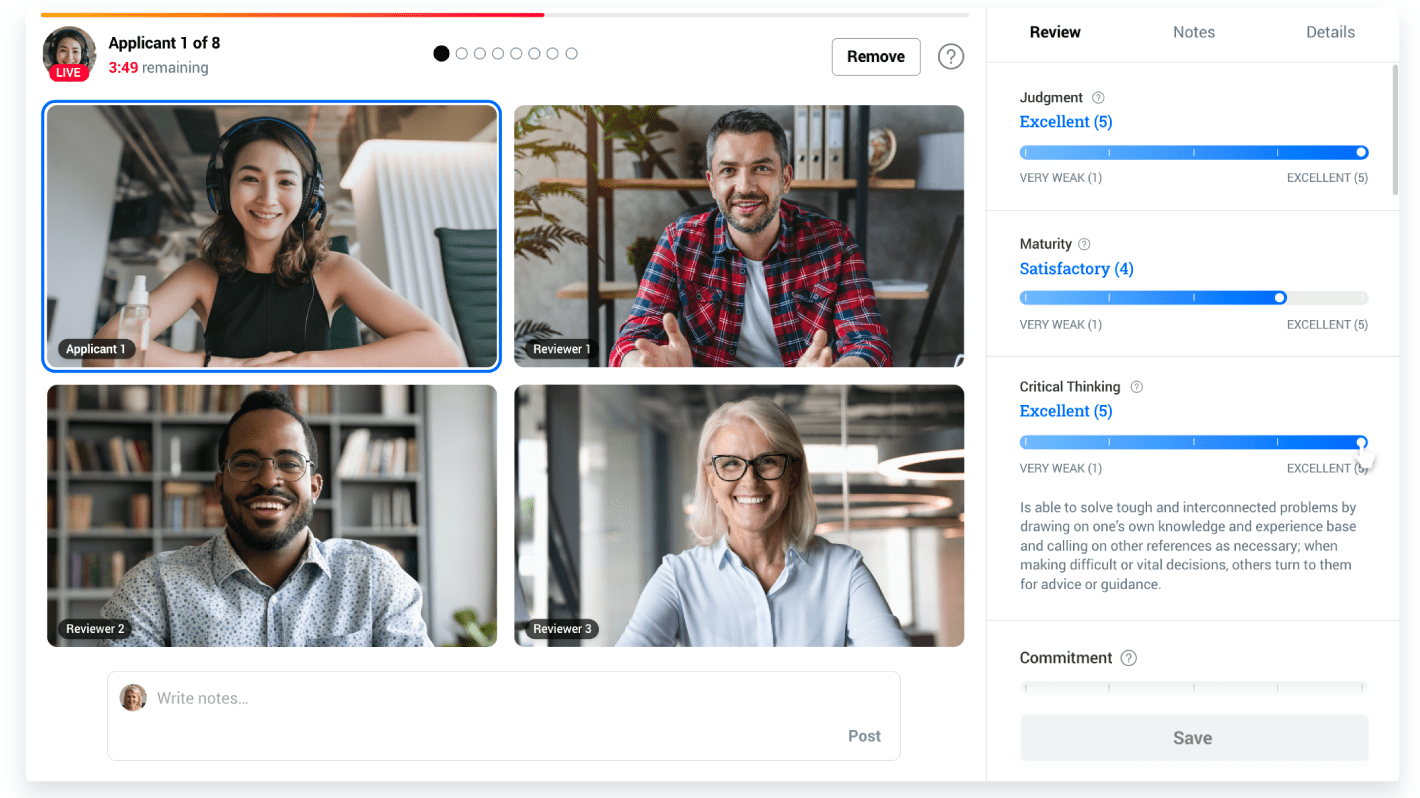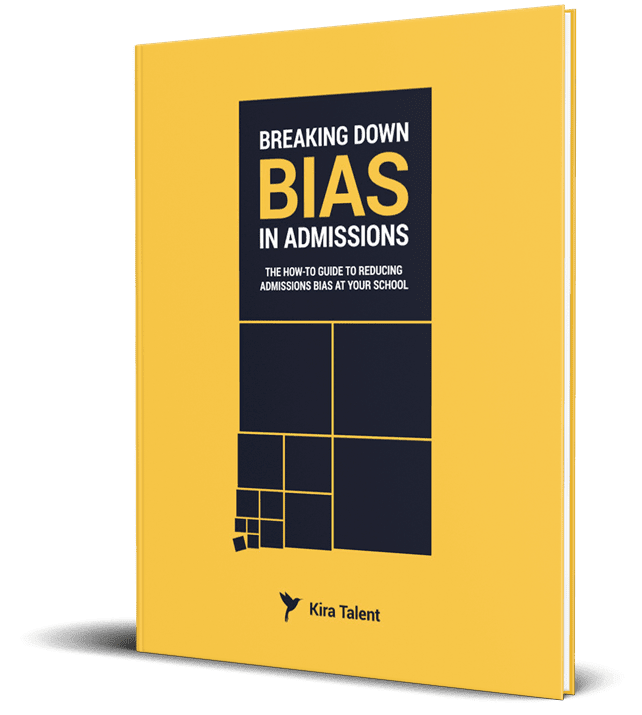This is part 3 of a 3 part series – check out part 1 here and part 2 here.
Students produce an incredible amount of data that schools can access quite easily.
In addition to grades, race, gender, and employment outcomes, a growing number of schools are tracking which competencies their students are developing through Co-Curricular Record/Transcript (CCR/T) data.
Learn more about creating a CCR/T on your campus.
While there’s little information on how they’re using this data, there are many innovative ways that different offices across campus could use it to better support students.
1. Admissions Offices
Human resource teams have been using competencies to hire applicants for decades. However, it’s just now becoming typical for higher education to do the same.
Schools are progressively finding that using competency-based assessments in admissions can help identify best-fit students.
So when determining which students to accept to your school, consider evaluating them through a competency framework.
This will help you narrow down the most important qualities of your students and create more structure to assess subjective criteria, like letters of recommendation or admissions essays.
Although there are many ways to determine which competencies you want to assess at admissions, there are benefits to relying on CCR/T data.
It provides hard evidence into which competencies your current students are developing, and informs your understanding of the type of student that could be successful at your school.
Case Study
You work in admissions at a large undergraduate school that measures student success by the percentage of students who complete their degree in four years.
Over the past few years, students have been taking longer to complete their degrees.
While this could be attributed to many factors, your admissions team is tasked with finding “better fit” students who are more likely to graduate in four years.
How Co-Curricular Record/Transcript data can help:
Gather a list of students who have successfully completed their degree in four years and analyze their CCR/T data for commonalities.
Look specifically at the competencies they developed on campus, then consider assessing for these competencies at admissions. This may increase the likelihood of admitting other applicants who’ll graduate in four years
2. Career Centers
Campus career centers have the responsibility of helping students prepare for, and find jobs after graduation.
Some of the companies they apply to may use competency-based hiring.
This practice of assessing candidates, not only for their degree subject or previous experience but for their possession of certain competencies, has been shown to decrease turnover and increase diversity.
Since your students may be hired based on competencies, it’s beneficial to help them think about how they can develop and articulate their personal competencies.
Case Study
A second-year, graphic design student comes to a resume workshop. Because they lack work experience, they’re unsure of how to stand out from other applicants.
How Co-Curricular Record/Transcript data can help:
- Consult the CCR/T to see which competencies previous graphic design students have developed while in school. Then use the CCR/T database to help the student find activities that are connected to those competencies.
- Consult graphic design job postings to see which competencies are most sought after. Using your school’s CCR/T database, help the student find activities on campus that’ll help them develop those skills.
Potentially, encourage students to create a competency-based resume to better demonstrate their development in these important competencies.
3. Centers for Community Engagement
Service learning or community engagement offices can consult CCR/T data to connect students with experiences that best suit their skill set.
This approach can mutually benefit your students and the partner organizations that your team works with.
Case Study
A community partner reaches out and is looking for a student volunteer to organize their adult literacy programming.
Because this is a leadership role, they’re looking for a student who has experience with leading teams and with effective intercultural communication.
How Co-Curricular Record/Transcript data can help:
CCR/T data will show your team which students have the skills that the partner organization is looking for.
With that in mind, you could require that students submit their CCR/T when applying for this volunteer position.
Or, if you have the resources, your team could do targeted outreach. This means pulling the CCR/Ts for the students on your mailing list, and only sending this opportunity out to those who are qualified.
Taking either approach will create a more efficient process for both you and the applicants.
What will you do with Co-Curricular Record/Transcript data to support students?
CCR/T data is vast and varied, but it provides an unparalleled look into who your students are, the skills they possess, and the skills they could develop.
Finding innovative ways to use CCR/T data on-campus will enhance your students' experiences and provide them with more ways to develop the competencies important to their future.
Does your school have a CCR/T? How do you utilize this data to support your current and future students? Comment below to share your experience.



